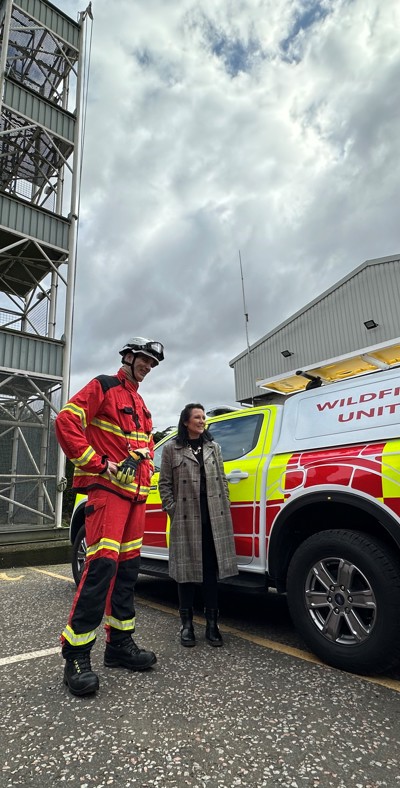Firefighters better equipped than ever to respond to wildfires
Wildfires in Scotland are becoming larger in scale and burning for longer periods of time, according to records from the Scottish Fire and Rescue Service.
Firefighters better equipped than ever to respond to wildfires
Since 2010, firefighters have attended around 2,500 wildfires. Eight of these lasted more than five days and they all occurred within the last five years.
Wildfires require a more significant volume of emergency response and the Scottish Fire and Rescue Service (SFRS) is in the process of rolling out a package of specialised vehicles including ten all-terrain vehicles, ten additional 4x4 vehicles and four logistical support units.
Additionally, a large amount of new equipment has been provided to support crews as they respond to these types of incidents as part of its wildfire strategy. Crews also have support from a dozen wildfire tactical advisors around Scotland.
Deputy Assistant Chief Officer (DACO) Bruce Farquharson is the SFRS Lead for Wildfires. He said: “Firefighters are gearing up for wildfire season and over the next few months we’ll be working hard to protect Scotland’s communities and environment.
“We know that wildfires are becoming larger in scale, burning for longer periods of time, and requiring a more significant volume of emergency response.
“When wildfires burn for days, it can involve hundreds of staff and involve many resources, a large proportion of which are provided by our on-call staff in rural communities to bring the incident to a safe conclusion.
“That’s why we have bolstered the response to these incidents with more specialised equipment located at our network of dedicated fire stations strategically placed to safeguard the public.”
At Dunblane Community Fire Station on Thursday, 4 April DACO Farquharson was joined by firefighters to provide a demonstration of equipment.
Siobhan Brown Minister for Victims and Community Safety, who attended the event at Dunblane, said:
"This wildfire campaign is hugely important as we know wildfires in Scotland cause substantial ecological and environmental damage and demand considerable and costly fire-management resources and different capabilities to address them.
"The Scottish Government is committed to supporting SFRS and is providing a total budget of £393.3 million in 2024-25. SFRS is investing in specialist resources, technological advancements and forward thinking operational practices that will help enhance its response to wildfire events."
Firefighters tackled an average of one wildfire every day across Scotland during spring and early summer last year. There were 133 incidents between March and June 2023, typically the busiest time of the year for wildfires in Scotland.
DACO Farquharson would urge the public not to light up a fire outdoors. He added: “Even with the best of intentions, there is still a risk that fire can spread. For example, if you light a campfire and don’t fully extinguish it before you leave, it can have devastating consequences.
“People should also ensure other items such as portable barbecues and cigarettes are disposed of safely and responsibly.
“We want the public to better understand the conditions that wildfires thrive in so that we can prevent them from happening.”
During the colder months, frost can remove the moisture from vegetation on the ground and leave it tinder dry.
Similarly in the spring or summer, very warm and dry conditions can leave the ground primed to fuel a fire.
Strong winds added to any of the conditions above can determine how much a wildfire spreads.


